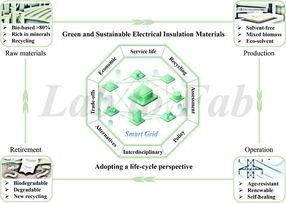Cheaper substrates made of oxide materials
Advertisement
Imagine building cheaper electronics on a variety of substrates -- materials like plastic, paper, or fabric. Researchers at Taiwan's National Chiao Tung University have made a discovery that opens this door, allowing them to build electronic components like diodes on many different substrates. They describe their findings in the journal Applied Physics Letters, published by the American Institute of Physics.
"Rectifying diodes are the fundamental building blocks in electronics," says Tuo-Hung Hou, describing the research. "Diodes made of oxide materials instead of traditional silicon are especially interesting because they can be fabricated at room temperature, as opposed to the 1,000° C typically required for silicon diodes. Besides complex materials engineering, our work shows a new route to greatly improve the rectification efficiency of oxide diodes by forming nanoscale current paths in oxides."
An extra bonus, Hou adds, is that by carefully controlling the nanoscale paths, they can create either a resistive nonvolatile memory, so-called "RRAM," or a rectifying diode in the same structure. RRAM simply consists of a layer of transition metal oxides sandwiched between two metal electrodes and is being actively pursued by many companies as the next "big thing" in memory.
The researchers hope their continued work will yield a new generation of electronic circuits made entirely of oxide materials.
Original publication: Tuo-Hung Hou, Hassan Raza, Kamran Afshari, Daniel J. Ruebusch, and Edwin C. Kan; "Nonvolatile memory with molecule-engineered tunneling barriers"; Applied Physics Letters 2010
Organizations
Other news from the department science

Get the chemical industry in your inbox
By submitting this form you agree that LUMITOS AG will send you the newsletter(s) selected above by email. Your data will not be passed on to third parties. Your data will be stored and processed in accordance with our data protection regulations. LUMITOS may contact you by email for the purpose of advertising or market and opinion surveys. You can revoke your consent at any time without giving reasons to LUMITOS AG, Ernst-Augustin-Str. 2, 12489 Berlin, Germany or by e-mail at revoke@lumitos.com with effect for the future. In addition, each email contains a link to unsubscribe from the corresponding newsletter.



























































